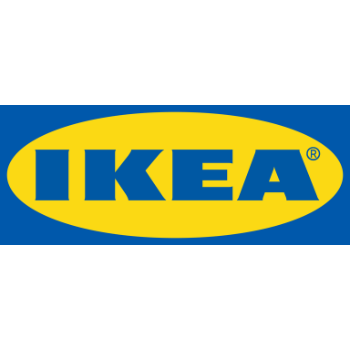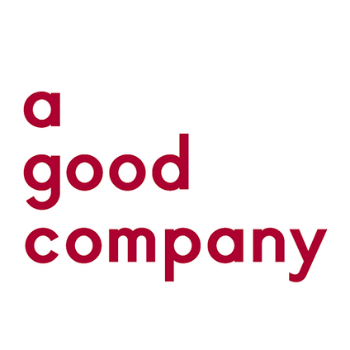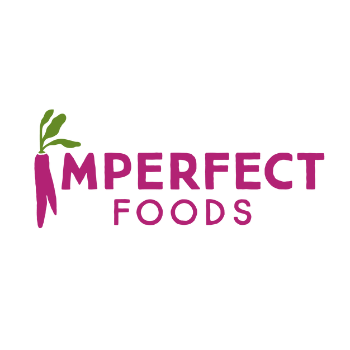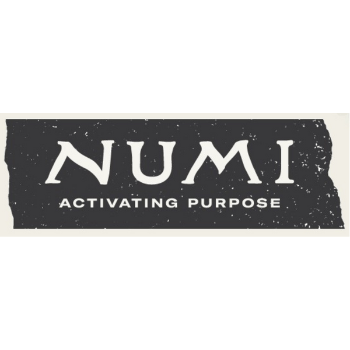Environmental sustainability is no longer optional — it’s a core part of how leading companies do business today. From carbon-neutral operations to zero-waste packaging and ethical sourcing, the world’s most recognizable brands are rethinking their impact on the planet.
In this guide, we spotlight 17 of the best green companies that are redefining what corporate sustainability looks like. These businesses aren’t just reducing their environmental footprint — they’re also building eco-friendly products, running climate-resilient supply chains, and setting bold goals for carbon emissions, waste reduction, and renewable energy.
Whether you’re an eco-conscious consumer or looking to work for an ethical company that aligns with your values, this list will show you who’s walking the talk on environmental responsibility.
Top 17 Green Companies Leading in Sustainability and Eco-Friendly Practices
If you’re looking for real-world examples of green companies that are leading the way in environmental responsibility, this list highlights 17 brands making a measurable impact. From zero-waste production to carbon-neutral operations and sustainable product design, these companies prove that going green is both possible and profitable.
- Nike – Circular design and recycled materials through their “Move to Zero” initiative
- Apple – 100% renewable energy across all global facilities
- Patagonia – Repair programs and transparency in supply chain emissions
- Starbucks – Ethically-sourced coffee and recyclable cup innovations
- IKEA – Solar-powered operations and sustainable wood sourcing
- Seventh Generation – Zero-waste goals and plant-based cleaning products
- A Good Company – Climate-positive stone paper and firearm-recycled pens
- Honda – Tree planting and renewable energy across North America
- Disney – Zero net greenhouse gas targets for global operations
- New Belgium Brewing – Zero-waste brewing and internal carbon pricing
- Pela – Compostable phone cases and Climate Neutral certification
- Johnson & Johnson – Recyclable packaging and microbead elimination
- Imperfect Foods – Food waste reduction through “ugly produce” delivery
- Salesforce – Tech-driven carbon reduction and green supplier commitments
- Native Shoes – Biodegradable vegan shoes and take-back recycling
- Numi Organic Tea – Climate-neutral production and sustainable packaging
- Who Gives A Crap – Recycled toilet paper and 50% profit donation to sanitation
⚠️ Please note that all logos and trademarks displayed on this blog are the property of their respective owners. They are used here solely for the purposes of discussion and commentary.
Is Nike a Green Company? Exploring Nike’s Sustainability and Climate Goals

Nike is not just a global leader in athletic gear — it’s also pushing boundaries in corporate sustainability. Through its Move to Zero initiative, Nike is working toward zero carbon and zero waste across its supply chain.
A cornerstone of its green strategy is the use of recycled materials in products, such as recycled polyester and Nike Grind, which turns manufacturing scraps and old shoes into new gear. Nike also powers its facilities with 100% renewable energy in the U.S. and Europe, with global expansion underway.
Nike’s Circular Design Guide promotes long-lasting, repairable, and recyclable products — fostering a circular economy in the fashion industry. By eliminating single-use plastics at its campuses and supporting regenerative agriculture in cotton sourcing, Nike is transforming how a sportswear giant can lead in climate action.
Is Apple a Sustainable Company? Inside Apple’s Renewable Energy and Materials Strategy

Apple may be best known for sleek devices and software — but it’s also setting new standards in corporate sustainability. The company focuses on three pillars: reducing climate impact, conserving natural resources, and eliminating harmful materials.
All Apple stores, offices, and data centers worldwide now run on 100% renewable electricity. The company has also invested heavily in solar and wind farms to support its clean energy goals and reduce upstream emissions.
Apple’s product design strategy emphasizes recycled materials (like aluminum, rare earth elements, and tungsten), long-lasting hardware, and closed-loop manufacturing. These efforts cut down on electronic waste and make Apple one of the most eco-forward brands in the tech industry.
Is Patagonia the Most Sustainable Apparel Brand? Inside Their Circular Economy and Climate Ethics

Patagonia is widely regarded as a pioneer in eco-conscious business, setting the standard for sustainable fashion and corporate responsibility. The company’s core mission — “We’re in business to save our home planet” — drives every aspect of its operations.
To minimize waste, Patagonia has established global repair centers, encourages customers to buy less and repair more, and even sells used gear through its Worn Wear program. These efforts support a strong circular economy model in the clothing industry.
While still reliant on fossil fuels for technical gear, Patagonia publicly acknowledges its limitations — and invests heavily in regenerative agriculture, biodiversity protection, and climate activism. Few companies match Patagonia’s combination of transparency, environmental impact, and social advocacy.
Is Starbucks a Green Company? Breaking Down Their Climate and Sourcing Commitments

Starbucks is blending its coffee empire with a bold vision for environmental and social sustainability. At the core is a commitment to 100% ethically sourced coffee, achieved through partnerships with C.A.F.E. Practices and Conservation International.
To address packaging waste, Starbucks is redesigning its iconic cups — aiming for reusable and recyclable alternatives in all stores by 2030. The company also invests in closed-loop recycling systems and reusable cup trials in global markets.
Their “100 Million Tree” program supports farmers affected by climate change by distributing climate-resilient coffee trees. In addition, Starbucks has pledged to cut its carbon, water, and waste footprints in half by 2030, reinforcing its role as a green leader in the food and beverage industry
Not only is it good for us as a society but it’s good for them for a variety of reasons. Various sustainability efforts can save businesses money, make them more efficient and can improve the quality of the work environment.
— Alfred Marcus, Strategic Management and Entrepreneurship Professor, University of Minnesota
Is IKEA a Sustainable Company? Renewable Energy, Ethical Sourcing, and Circular Goals

IKEA is transforming the way furniture is made, powered, and delivered through a long-term commitment to climate neutrality and resource responsibility. By 2030, the company aims to become a climate-positive business, reducing more greenhouse gas emissions than its entire value chain emits.
Nearly 50% of IKEA’s wood comes from sustainably managed forests, and all cotton meets the Better Cotton Initiative standards — promoting reduced water use, fewer pesticides, and better livelihoods for farmers. The company is also investing in recycled and renewable materials for all products.
On the energy front, IKEA operates more than 700,000 solar panels and has installed EV charging stations across many locations. It plans to run on 100% renewable energy across all operations while expanding circular services like furniture take-back and resale to reduce waste.
Is Seventh Generation a Green Company? Zero-Waste Goals and Sustainable Packaging in Action

Seventh Generation is a trailblazer in the eco-friendly cleaning and personal care space, offering plant-based products made from sustainably sourced ingredients. Their mission is rooted in protecting the health of future generations — and every bottle, wipe, and detergent reflects that purpose.
The company prioritizes sustainable packaging, using recycled materials, biodegradable content, and refillable systems wherever possible. This packaging-first approach addresses the massive environmental impact of plastic waste in household goods.
With a bold target to become a zero-waste company by 2025, Seventh Generation is redesigning products and processes to minimize landfill contributions. Their commitment to transparency, climate justice, and supply chain ethics makes them a standout in the world of green consumer goods.
What Makes A Good Company Green? Sustainable Materials and Ethical Innovation

A Good Company is a Swedish startup challenging the norms of e-commerce and product manufacturing by building a fully climate-positive business model. Their mission: make durable, everyday products without compromising the planet.
Flagship items like the stone paper notebook and luxury pens made from recycled illegal firearms exemplify their approach to environmental innovation and ethical sourcing. These aren’t just clever ideas — they actively reduce emissions, conserve water, and reuse materials that would otherwise contribute to global waste and violence.
What truly sets Agood Company apart is its radical transparency. Every product page includes detailed lifecycle data, from raw material sourcing to emissions tracking and supply chain disclosures — empowering consumers to make informed, sustainable choices.
Is Honda Going Green? EV Goals, Renewable Energy, and Long-Term Climate Strategy

Honda is accelerating toward a more sustainable future by investing in clean energy, electric vehicles, and carbon reduction strategies across its global operations.
A key early initiative was Honda’s TreeFund Program, which has planted more than 700,000 trees in New Zealand — supporting long-term carbon sequestration. But the company’s current strategy goes far beyond offsetting.
In North America, Honda has signed virtual power purchase agreements (VPPAs) that cover over 60% of its electricity needs with wind and solar energy. Globally, Honda has committed to carbon neutrality by 2050 and aims to shift 100% of its vehicle sales to electric or fuel cell models by 2040.
By combining green manufacturing, renewable energy, and a total EV transformation, Honda is proving that automakers can be part of the climate solution.
Is Disney a Sustainable Company? 2030 Zero-Carbon Goals, Emissions Reductions, and Green Facilities

Disney is blending magic with environmental responsibility, aiming to make its global operations more sustainable through ambitious climate and energy goals. The company has adopted a zero net direct greenhouse gas emissions policy, reducing emissions across theme parks, studios, and offices.
By 2030, Disney aims to power all operations with 100% zero-carbon electricity, a move that includes investing in renewable energy projects like solar arrays at Disneyland Paris and Walt Disney World. These initiatives help reduce both direct and indirect emissions tied to energy use.
Beyond electricity, Disney is working to reduce water consumption, divert waste from landfills, and promote responsible supply chains. These commitments are part of Disney’s broader plan to lead in environmental stewardship across the entertainment industry.
Is New Belgium Brewing a Green Company? Zero Waste Certification, Onsite Energy, and Sustainability Advocacy

New Belgium Brewing isn’t just a craft beer favorite — it’s also a leader in sustainable brewing practices. The company is one of the few in the U.S. to earn a Platinum Zero Waste Business Certification, diverting 99.9% of its waste from landfills through aggressive recycling and reuse systems.
In a unique move, New Belgium introduced an internal energy tax that holds departments accountable for their emissions — using the funds to invest in onsite renewable energy and efficiency upgrades. The brewery also powers a portion of its operations through on-site solar and biogas recovery from brewing byproducts.
As a certified B Corp and employee-owned business, New Belgium advocates for stronger climate policies industry-wide. Their work proves that environmental responsibility and business growth can go hand in hand — even in energy-intensive industries like brewing.
Is Pela an Eco-Friendly Brand? Compostable Phone Cases, Plastic Reduction, and Climate Neutral Certification

Pela is best known for creating the world’s first 100% compostable phone case, offering a circular alternative to conventional plastic accessories. Made with Flaxstic®, their cases are crafted from 45% plant-based materials and designed to break down without leaving harmful residues.
The company has set a bold mission to prevent 1 billion pounds of plastic waste from ever being produced — a goal supported by product expansion into compostable AirPod cases, grip accessories, and sunglasses.
Pela is also a Climate Neutral Certified brand and a proud member of 1% for the Planet, donating 1% of all revenue to environmental nonprofits. By combining carbon accountability with product-level innovation, Pela proves that small consumer goods can drive large-scale environmental change.
Is Johnson & Johnson a Green Company? Sustainable Packaging, Safer Ingredients, and Beauty Industry Reform

Johnson & Johnson is reshaping the beauty and personal care industry through its commitment to sustainable packaging and safer ingredients.
By 2025, the company aims to use 100% recyclable, reusable, or compostable packaging across all consumer brands — including certified post-consumer and pulp-based materials.
J&J was one of the first major players to remove plastic microbeads from personal care products, long before regulatory bans, helping protect marine ecosystems. Their Global Aquatic Ingredient Assessment™ (GAIA) tool further analyzes how product ingredients affect aquatic life and biodegradability.
These steps, combined with a broader focus on transparency, responsible sourcing, and reduced water and energy use, signal Johnson & Johnson’s growing role as a sustainability leader in consumer health and beauty.
Why Imperfect Foods Is a Leader in Eco-Friendly Grocery Innovation

Imperfect Foods is reimagining the grocery supply chain by rescuing cosmetically flawed but perfectly edible food that would otherwise go to waste. The company partners directly with farms and producers to deliver upcycled produce and surplus goods to consumers at lower prices — reducing waste and democratizing access to sustainable food.
Since launch, Imperfect Foods has saved millions of pounds of food from landfills, helping cut methane emissions and overall carbon impact in the food system. Their model also reduces the need for new production, which conserves water, energy, and land use.
The company continues to green its operations by focusing on low-emissions transportation, minimal packaging, and localized delivery hubs — making them a rising star in eco-friendly grocery delivery.
Is Salesforce a Sustainable Tech Company? Net-Zero Goals, Green Cloud Services, and Scope 3 Leadership

Salesforce is leading the charge in enterprise sustainability, aiming to become a net-zero company across its entire value chain, including Scope 3 emissions from suppliers and business travel. This positions Salesforce as one of the few tech giants tackling indirect emissions head-on.
Their Net Zero Cloud platform helps businesses track and reduce their own carbon footprints — demonstrating how Salesforce is embedding sustainability directly into its core product offerings. The company also prioritizes green building certifications, sustainable materials, and clean data centers to reduce operational impact.
As a founding member of the Step Up Declaration, Salesforce continues to advocate for climate policy and cross-sector collaboration — pushing digital transformation to become a tool for climate resilience.
Is Native Shoes a Sustainable Brand? Vegan Materials, Closed-Loop Recycling, and Biodegradable Design

Native Shoes is reshaping the footwear industry with a closed-loop model that blends vegan materials, minimal emissions, and a clear end-of-life solution for every pair. Their shoes are lightweight, durable, and designed with low-impact injection molding that minimizes waste from the start.
Through the Remix™ Project, Native collects used shoes and repurposes them into playground flooring, insulation, and seating, helping divert waste from landfills and reduce the need for virgin materials. Their flagship innovation — the Plant Shoe — is 100% biodegradable and made entirely from natural fibers, offering a compostable alternative to conventional footwear.
By focusing on circular design and material transparency, Native Shoes proves that fashion and sustainability don’t have to be at odds.
Numi Tea’s Sustainability Strategy: Organic Farming, CO2 Tracking, and Coalition Advocacy

Numi Organic Tea goes beyond “organic” by embracing a climate-smart, socially responsible approach to tea production. All of Numi’s teas are certified organic and fair trade, and the company uses plant-based, compostable wrappers and fully recyclable cartons to minimize waste.
Numi tracks CO₂ emissions across its entire supply chain, actively working to reduce the carbon footprint of tea production and distribution. The company also donates a portion of profits to environmental nonprofits and clean water initiatives around the world.
As a founding member of OSC2 (One Step Closer to an Organic Sustainable Community), Numi brings together CEOs and leaders from across the natural products industry to promote shared climate goals, regenerative agriculture, and eco-packaging innovation — extending their sustainability mission far beyond tea.
How Who Gives A Crap Combines Eco-Friendly Hygiene With Global Sanitation Aid

Who Gives A Crap is redefining what sustainable hygiene looks like — one roll at a time. The company offers 100% recycled paper and tree-free bamboo toilet paper, all plastic-free, compostable, and shipped in zero-waste packaging. Their products significantly reduce the carbon footprint of traditional tissue production.
But sustainability here isn’t just about materials. Who Gives A Crap donates 50% of its profits to fund toilet construction and sanitation projects in underserved communities. To date, they’ve contributed millions toward improving hygiene access worldwide.
By combining low-impact materials, ethical manufacturing, and mission-driven philanthropy, Who Gives A Crap transforms an everyday essential into a force for environmental and social good.
Frequently Asked Questions (FAQ)
To have a green business means that some or all aspects of the business are based on eco-friendly principles. This includes sourcing of raw materials and the supply chain, manufacturing process, packaging, but also the administration and post-consumer responsibility.
Yes, a green business is profitable. Sustainability policies can easily be adjusted to transform businesses into more profitable entities. A green company can make a more successful entrance into a new market and attract more investors. Green companies are also more successful at keeping pace with increasingly stricter environmental regulations.
Companies that use green marketing are those that highlight the environmental benefits of their products or services. Among the companies that are known for the best examples of green marketing are Patagonia, Starbucks, Nike, IKEA, and Timberland.
The benefits of going green for a business include many advantages, from bottom-line cost savings to unfathomed marketing opportunities. Green companies reduce waste and decrease costs while being able to apply for eco-friendly incentives and rebates. they often promote a healthier work environment and attract eco-conscious customers.
Yes, going green can be expensive for business initially. However, the cost reductions in energy savings, paired with tax benefits can help companies mitigate the costs of going eco-friendly. Many companies succeed to cover the costs of going green through recycling or optimizing their energy and water use.
The problems with going green are most often related to costs. For some companies, the switch to sustainability can be expensive to the point that it doesn’t offset the initial upfront costs. Transition to green materials can sometimes lead to higher costs in the production process.
Companies are going green in more than one way. The two biggest initiatives are reducing energy, which also includes switching to renewable, and reducing waste at the office and production lines. According to McKinsey & Company, 63% of companies are reducing energy consumption and 61% of them are reducing waste.
No, Tesla is not a green company. Although Tesla makes electric cars that are generally better for the environment, the company does not report enough details about the production of its vehicles or sourcing of its products for people to get an idea about its sustainability.
The brands that go green make up all the companies in this list and many more. They include Nike, Honda, Johnson & Johnson, Starbucks, etc. There are also many companies that didn’t make it to the list, such as Toyota, Google, McDonald’s, and United.
Starbucks is going green by identifying key areas in which it can make a big impact by 2030. It includes replacing disposable with reusable packaging and investing in innovative water conservation and reforestation practices. Starbucks is also buying only 100% ethically-sourced coffee.
You become a green entrepreneur by implementing environmentally-friendly principles in your company. You can try to reduce environmental impact by partnering with a recycling company, switch to green energy, or develop environmentally-safe products and services.
A green business model is a business model that enables companies to align their operations with eco-friendly outcomes. It helps businesses offset their environmental impact through greenhouse gas emission policies and socially-responsible initiatives.
Going green is reducing one’s environmental footprint and living a healthier lifestyle. Generally, it means wasting less natural resources, consuming less energy and water, limiting pollution and recycling, reusing, and composting waste. Going green is important for conserving the planet’s resources.
Yes, going green actually helps the environment. It reduces the amount of pollution in the soil, water, and air. By improving our energy efficiency, using renewable energy sources, recycling, and reducing waste, people can limit the number of pollutants that are released into the environment.
Final Thoughts: What Makes a Company Truly Green?
A green company isn’t defined by its industry — it’s defined by its actions. As this list shows, businesses across every sector are embracing sustainable practices, from using recycled materials and renewable energy to eliminating waste and giving back to communities.
Some were founded with a mission to fight climate change, while others are evolving legacy models to reduce their environmental impact. Whether it’s eco-friendly packaging, clean energy sourcing, or circular product design, there’s no single path to becoming a sustainable business.


